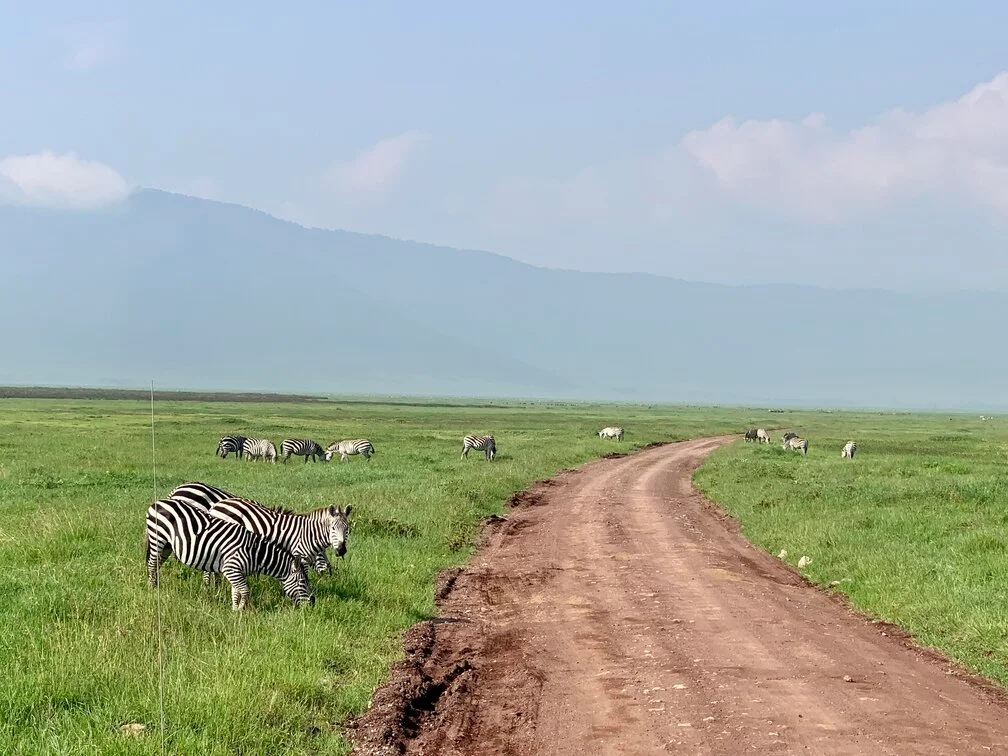The Ngorongoro Conservation Area is a vast expanse of highland plains, forests, and savannah woodlands, stretching from the Serengeti National Park in the north to the eastern part of the Great Rift Valley. The park was established in 1959.
The Ngorongoro Crater is the world’s largest continuous caldera, spanning approximately 14 km. Despite its size, it never floods, although it contains a small saline lake known as Lake Makat and the Gorigor Swamp.
The Ngorongoro Conservation Area has an elevation of 1,000 meters above the lowlands of the eastern Serengeti. Established in 1959, the conservation area was designated for multiple land use, allowing wildlife to coexist with the local Maasai people, who practice traditional livestock grazing.

The park is globally recognized for its biodiversity conservation efforts and is home to endangered wildlife species such as the black rhino. It is part of the Serengeti ecological environment, one of the last undisturbed ecosystems in the world today, and is famous for hosting a spectacular animal migration.
The Ngorongoro Conservation Area is managed by the Ngorongoro Conservation Area Authority (NCAA). A general management plan is in place, with primary objectives that include preserving the area’s natural resources, promoting tourism, and safeguarding the interests of the Maasai people.
What Makes Ngorongoro Conservation Area Famous?
The Ngorongoro Conservation Area is renowned for housing one of the world’s largest calderas. The crater is one of its main attractions. Other notable aspects include:
Diverse Wildlife: The park is home to a wide range of wildlife, including elephants, rhinos, lions, leopards, and buffalos. There are approximately 25,000 wild animals, including zebras, gazelles, hyenas, and more.
Cultural Value: The Maasai people have lived in the area for hundreds of years. Visiting the region provides tourists with the opportunity to learn about their culture and way of life.
Unique Ecosystem: The conservation area offers a unique blend of diverse wildlife, native Maasai pastoralists—whose existence is an integral part of its history—and the world’s largest intact volcanic caldera, making it a remarkable destination for nature, wildlife, and cultural experiences.
Where is the Ngorongoro Conservation Area Located?
The Ngorongoro Conservation Area is situated in northern Tanzania, specifically in the Ngorongoro District of the Arusha Region. The area covers approximately 8,292 square kilometers, including the Ngorongoro Crater.
Wildlife in the ParkThe Ngorongoro Conservation Area is home to various wildlife species, including some that are endangered. Among them are:
Lions
Leopards
African elephants
Cheetahs
African buffalos
Spotted hyenas
Hippopotamuses
Maasai giraffes
Elands
Gazelles
Topis
Impalas
Grant’s zebras
Warthogs
Bat-eared foxes
Black-backed jackals
Flamingos
African wild dogs
How Much Does It Cost to Visit the Park?
The cost of visiting the park depends on the length of stay and the activities involved.
Park Fees: Entrance fees vary by age. Adults (16 years and above) pay $50, children (5-15 years) pay $10, and children under four enter free. The entrance fee is valid for 24 hours.
Accommodation: Prices for accommodation within the Ngorongoro Conservation Area range between $200 and $1,000 per person per night, depending on the season and type of lodging.
Crater Fees: A fee of $295 per vehicle is charged. Tanzanian citizens pay 11,800 Tanzanian shillings.
Walking Safari Guide Fees: A long or short walking safari within the crater costs $23.60. Non-East African citizens are charged $11.80.
Camping Fees:
Non-East African residents aged 16 and above: $35.40
Children (5-15 years): $11.80
Tanzanian and East African citizens aged 16 and above: 11,800 Tanzanian shillings
Children (5-15 years): 5,900 Tanzanian shillings
How Far is the Park from the Capital?
The distance between the Ngorongoro Conservation Area and Dar es Salaam by road is approximately 857 km, with an estimated travel time of 4 hours and 42 minutes.
Requirements for Entering the ParkTourists visiting the Ngorongoro Conservation Area must meet the following requirements:
A valid passport: A valid visa (available before arrival or upon arrival at the airport)
Proof of yellow fever vaccination
An experienced and licensed driver familiar with the terrain and conservation area rules
Compliance with the park’s regulations
Visitors are advised to observe the following security measures while in the park:
Do not disturb the wildlife: Avoid venturing into restricted areas or roads that are off-limits.
Use licensed tour guides who can advise on the safest routes and places to visit.
Travel in groups—avoiding solo travel ensures you have assistance in case of emergencies.
Keep a safe distance from wildlife and avoid any physical contact.
Secure your belongings at all times by using a safe box for valuables and keeping it locked.
By following these guidelines, visitors can enjoy a safe and unforgettable experience at the Ngorongoro Conservation Area.

